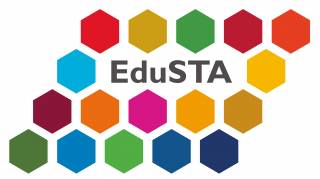This frame is found in many publications and competence frameworks for ESD: students should develop skills to be able to solve sustainability problems in the real world. And, of course, solving problems is important. But when faced with the uncertainty, complexity and emergent character of sustainability challenges, the frame falls short.
When transitioning towards a more sustainable world, our actions can have unexpected consequences; what seems a good path to follow today, might cause problems tomorrow. Sustainability challenges, due to uncertain nature, resist solving in the linear way we are used to. Often, due to their complexity, these challenges even resist definition. Therefore, it is not possible to foresee or figure out a solution or a linear path to achieve it.
When we teach our students to be goal-oriented and to work towards solutions, we prepare them for complicated problems. ‘Complicated’ implies that the result can be predicted or calculated and that the circumstances are relatively stable. However, complex or ‘wicked’ challenges require a different approach and skillset. Instead of taking steps along a path towards the solution, it is necessary to deal with and even embrace unexpected, emerging events. The way forward is then one of probing, experimenting and responding to what happens. So, when educators and students approach problems as if they are complicated but in fact they are dealing with wicked problems, they don’t learn to acknowledge and deal with uncertainty and emergence and run the risk of becoming frustrated and overwhelmed.
So, how can ESD address complexity? Here are some insights on education, pedagogy, and educational design.
Education AS sustainability
According to Stephen Sterling, a renowned researcher of environmental and sustainability education, the ambitions of ESD are to foster an open mind, a willingness to shift one’s mindset, to be curious and question assumptions and values to find new ways to move towards a more sustainable world. However, because of our default in wanting to solve problems, Sterling identifies three narratives in talking about sustainability education. First, education about sustainable development, where we teach and learn about SD issues. Second, education for sustainable development, which focuses on problem solving. Yet the closest to the aims of ESD is a third narrative – education as sustainable development, calling for transformative learning and holistic thinking in connection with the world and all its inhabitants.
This implies that education should be connected to the world and take place in the world, rather than exclusively at school. It also means that there is not such a thing as ‘being ready for the world’ after completion of the study programme. For students and teachers alike, dealing with challenges in the world is ongoing, and education should stress the ability to engage with the world in a creative way, to embrace uncertainty and to reflect on and learn from what happens when trying to bring about change. Arjen Wals calls this the ‘capacity to disrupt’ and ‘learning from resistance to disruption’.
Pedagogy of disruption
When students and teachers are both learners trying to understand a complex challenge, and it is not possible to know in advance what will happen when we work on sustainability challenges, what does this mean for the pedagogical role of the teacher? Research suggests that pedagogical approaches should facilitate exploration of alternative ways of acting and thinking and thereby questioning values and assumptions underlying current systems, strategies and decisions.
This also implies that teachers are willing to get uncomfortable together with students. Keri Facer expresses it beautifully when she states: “ESD is about opening educators’ and students’ hearts so that they can know beyond the boundaries of what is acceptable, so that they can think and rethink, can create new visions”. Another implication of embracing complexity is that there are no fixed learning outcomes in the sense of competences that can be ‘measured’ in terms of the classical grade. Outcomes are more likely process-oriented, assessing a shift in coping strategies or a shift in mindset, rather than indicating a specific competence level that is the same for every student.
Educational design
There is not one way to design education as sustainable development. But several studies provide perspectives, principles or practices that can guide the development of learning environments for ESD. Bringing diversity and multiplicity into the learning environment is an important guideline, as well as embeddedness in real-world communities. The need to bring dissonance and an openness to emergence is complemented by what Bas van den Berg calls “an ethic of care”, which means that there is always consideration for emotional wellbeing, safety and community building, inside as well as outside the classroom.
The last important feature of ESD is its cyclical nature: education as an iterative or spiralling and emergent process, that is monitored continually. In his research into regenerative education, Thomas McIntyre characterizes the ESD-teacher as the “transgressive gardener”: like the gardener, who knows what each flowerbed, shrub or tree needs, the teacher tends to (designs and enacts) the conditions for each learner to flourish so that learning-based change can emerge.
Designing education as sustainable development requires a shift in perspective regarding the role of the teacher, where education takes place (inside or outside the classroom), what it is students are working towards, and to capture it all together, the frame we use to look at problems. Distilling this into a badge challenged the EduSTA consortium to think about what the essence of this perspective shift might be and translate these to very concrete ‘measurable’ outcomes. The badges are a snapshot of what it can mean to be a sustainability educator, in a format that is familiar to us in the world of education that revolves around measuring outcomes and certifying our learning.
The proof of the pudding is of course in how the badges can activate a shift in the mindset in sustainability educators to facilitate the transformative and emergent learning that ESD calls for.
Reading tips
On complicated/complex:
- the Cynefin framework. Snowden & Boone 2007. A Leader’s Framework for Decision Making. Harvard Business Review.
On the transgressive gardener and spiralling education
- PhD thesis Thomas Macintyre
On transgressive learning, regenerative education:
- Capturing Transgressive Learning in Communities Spiraling towards Sustainability. Thomas Macintyre, Valentina C. Tassone and Arjen E. J. Wals 15 June 2020.
- Arjen Wals (2022), Transgressive learning, resistance pedagogy and disruptive capacity building as levers for sustainability.
- Bas van den Berg (2022), PhD Thesis. Design Principles for Regenerative Higher Education in Times of Sustainability Transitions. https://edepot.wur.nl/589879
- Koen Wessels (2022). PhD Thesis. Pedagogy of Entanglement. A response to the complex societal challenges that permeate our lives.
- Keri Facer (2019). Storytelling for troubled times. What is the role for educators in the deep crises of the 21st century? Literacy, 53(1), 3-13.
Author: Petra Cremers, Centre for Teaching & Learning, Hanze UAS Groningen
Thank you, Lauren Verheijen for your valuable feedback on the first version of this blog!


